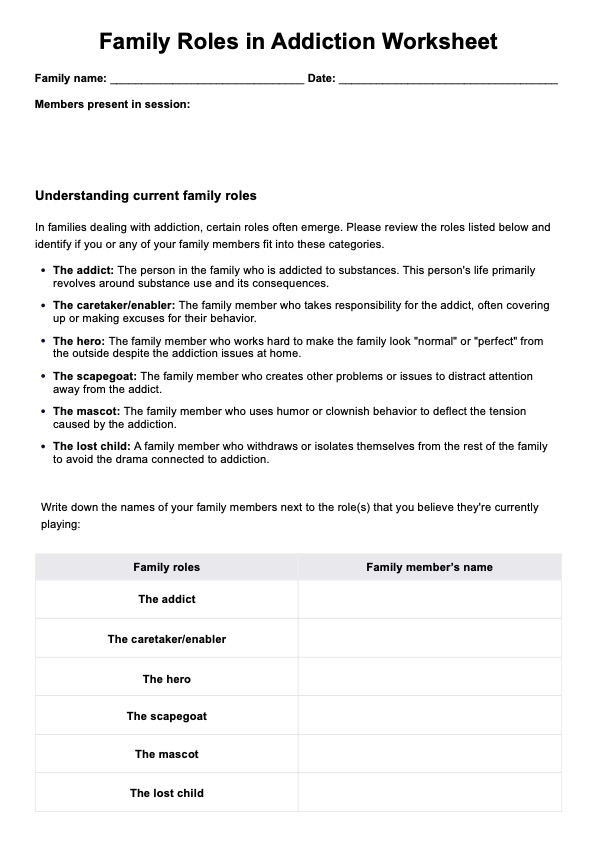Family members adopt these roles as coping mechanisms to deal with the uncertainty, stress, and emotional turmoil that come with addiction. These roles often emerge subconsciously as individuals try to provide stability, avoid conflict, or divert attention from the addiction.

Family Roles In Addiction Worksheet
Help your clients understand how family roles impact addiction. Use our Family Roles in Addiction Worksheet to support healthier family dynamics.
Family Roles In Addiction Worksheet Template
Commonly asked questions
No. These roles can emerge in any family dealing with chronic stress or dysfunction, including mental health issues, chronic illness, or behavioral addictions. They are strategies to cope with emotional pain and instability.
Yes. As family dynamics evolve and individuals within the family grow or respond differently to the addiction, their roles can change. Therapy and family healing processes can also lead to a shift in roles as healthier coping mechanisms are developed.
EHR and practice management software
Get started for free
*No credit card required
Free
$0/usd
Unlimited clients
Telehealth
1GB of storage
Client portal text
Automated billing and online payments











